
Photo Report : ENJJPT - Sheppard AFB, TX
ENJJPT - Sheppard AFB, TX
Euro-NATO Joint Jet Pilot Training - USAF 80th Flying Training Wing
Report and photos by George Karavantos
One of the largest U.S. Air Force training facilities is Sheppard Air Force Base, five miles (8.0 km) north of Wichita Falls, Texas. The Air Education and Training Command’s 82d Training Wing (82 TRW) is the host unit at Sheppard AFB and provides specialized technical and field training for officers, airmen and civilians of all branches of the U.S. military as well as its allies. Sheppard AFB also hosts the 80th Flying Training Wing (80 FTW) which runs the Euro-NATO Joint Jet Pilot Training (ENJJPT) program.
ENJJPT is a multi-national flying training program to produce combat pilots for both NATO and the USAF. This international flying training program is manned and managed by the participating nations. While hosted and commanded by the USAF, all 14 participating nations have a say in what the syllabus is, and how the program is run. All the leadership positions within ENJJPT - aside from the Wing Commander - can be filled by a representative from any of the participating nations. Each nation assigns both students and instructors, with costs being shared across the board depending on how many students are in attendance.
For many years now, the ENJJPT has provided flight training to student air force pilots from nine NATO partners: Belgium, Canada, Denmark, Germany, Italy, the Netherlands, Norway, Turkey and the United States. Greece and Spain also take part in the program providing instructors and since the end of 2019, Spain is now also sending students. In 2019, the United Kingdom resumed its contribution by sending instructors again from July, followed by students in August. Meanwhile, Romania is a new member and sent its first students in May 2019. Portugal is the only signatory not actively participating at this moment. The ENJJPT trains approximately 50% of all USAF fighter pilots and is the sole source of fighter pilots for the partner nations of Belgium, Denmark, Germany, the Netherlands and Norway.
The ENJJPT history can be traced back to the mid-1960s when the West German Air Force purchased a small fleet of T-37 and T-38 training jets to be operated at Sheppard Air Force Base in Texas, because of the relatively better weather conditions that prevail there throughout the year. Based on the success of that German training initiative in the US, the expanded ENJJPT program as it is known today was formally formed in 1978 when the North Atlantic Treaty Organization selected the 80th FTW to host the Euro-NATO Joint Jet Pilot Training (ENJJPT).
In June 1980, the then US Secretary of Defense Harold Brown, announced that Sheppard had been formally selected for ENJJPT. The program officially started on October 23, 1981. Since then, the program has pinned wings on over 7700 pilots and counting. Due to its success over the following years, the initial 10-year hosting period at Sheppard was extended multiple times. It has now been extended to 2026. There are no plans to move elsewhere.
TRAINING SYLLABUS
The ENJJPT offers four distinct training programs. In addition to Undergraduate Pilot Training (UPT), it provides in-house instructor training (teaching pilots to become instructors), Introduction to Fighter Fundamentals (IFF), and IFF upgrade instructor pilot training (a syllabus for instructor pilots to become IFF instructors). About 200 student pilots earn their wings at ENJJPT and around 80 new instructors are trained annually. Up to 150 pilots transition through the IFF program each year.
The UPT element involves eight classes per year, each with around 25 students learning their new trade over a 55-week period. Roughly speaking, the UPT is divided into three phases. Not all students go through all phases of UPT - this depends on where they are from and the aircraft type they will progress to in the future. For example, they might just take the first two phases, or join the program for the third phase only.
Phase 1 of the UPT lasts five weeks and involves 134 hours of ground training and six simulator sessions to prepare students for their initial training on the T-6. Phase 2 consists of flying the T-6. It involves a further 204 hours of ground training, 34 simulator sessions, and 78 sorties totalling 105 hours.
Once students have mastered the T-6, they continue onto the T-38 for Phase 3. Phase 3 spans a further 24 weeks, with 137 more hours of ground training, 36 simulator sessions and 79 sorties in the T-38 Talon for a total of 90 hours in the air.
Upon successful completion of Phase 3 of the full UPT program, the students are awarded their USAF pilot wings. They will have completed 475 hours of ground training, 99 hours in sims and 195 hours in the air, all in roughly a year!
Students selected to move on to fighters then go on to fly the Introduction to Fighter Fundamentals (IFF) course, where they start learning the actual fighting component of being a fighter pilot. That nine-week course consists of 80 hours of academics, nine simulator sessions, and 16 intense sorties in the air, again on the T-38.
The IFF portion of the ENJJPT syllabus is likely to be the most demanding part of the course for most students. Not only are the days long and the flow of information relentless, but the missions the students fly are also incredibly physically demanding. This is the first time the students will strap into the jet with the intention of learning to use it as a weapons delivery platform, the sole reason a fighter exists. That's a serious responsibility and the students don't take it lightly, spending hours preparing, briefing and debriefing their missions in addition to the time they actually spend flying.
Upon completion of the IFF course, most of the fighter pilots will head for their respective operational conversion courses for the front-line aircraft. However, others may be invited to remain at Sheppard for a follow-on tour to become an instructor in the program.
The IFF course at ENJJPT has various streams tailored to the role of the front-line fighters that students will eventually fly depending on their home nation's fleets.
Not every student at ENJJPT completes the full syllabus, as some of the international students receive varying levels of equivalent training at home. Pilots of all nations selected to fly platforms other than fighters do not complete the IFF course. They fly a modified final few weeks of their UPT course, in order to prepare them for their next step, most often multi-engine aircraft training.
Students who find themselves at Sheppard flying only the T-38 follow a similar structure, first learning to fly the T-38 on the UPT phase 3 to get their USAF wings and then learning to fight the jet on the IFF course.
By the end of their training, all graduates of the ENJJPT will have covered all of the following: Instrument flying, basic and advanced two-ship formation, four-ship formation, low-level navigation, basic fighter manoeuvres (BFM), air combat manoeuvring (ACM), close air support (CAS) and air-to-ground weapons delivery.
EVERYDAY'S FLYING
The flying training at Sheppard falls under the 80th Flying Training Wing of the US Air Force's Air Education and Training Command (AETC) responsibilities. The Wing has 211 aircraft assigned, 76 T-6A Texan IIs and 135 T-38C Talons, which are divided into five fight training squadrons (FTS). Two squadrons with the T-6A and the other three with the T-38C Talon.
The US Air Force activated the 80th Flying Training Wing in 1973 at Sheppard AFB, Texas, with the lineage and the honours of the 80th Fighter Group. The 80th FTW and the 88th, 89th and 90th Flying Training Squadrons provided Undergraduate Pilot Training for the USAF, West German Air Force and partner nations under the USAF Security Assistance Training Program before the establishment of the ENJJPT program. The Wing began teaching the Introduction to Fighter Fundamentals (IFF) course in 1994. In 1998, the 97th FTS, a USAF Reserve unit, joined ENJJPT to augment it with experienced instructor pilots. In 2009, the wing activated two more squadrons: the 459th FTS and the 469th FTS.
| 80th FTW TRAINING SQUADRONS: | ||
| 88th FTS | “Lucky Devils” | T-38C |
| 89th FTS | “Banshees” | T-6A |
| 90th FTS | “Boxing Bears” | T-38C |
| 459th FTS | “Twin Dragons” | T-6A |
| 469th FTS | “Fighting Bulls” | T-38C |
The Beechcraft T-6A Texan II turbo-prop trainer is based on the Swiss Pilatus PC-9. It is used for basic training in the UPT program for new students arriving at Sheppard. It was introduced into service with the USAF in 2001 to replace the Cessna T-37B ‘Tweet’ basic jet trainer. The advanced training in phase 3 sees a step up to the T-38 Talon, which has been a USAF staple for almost 60 years. Today, both USAF and ENJJPT trainees fly the upgraded T-38C. Both aircraft types of the 80th FTW fly approximately 230 sorties per day. For the year 2019, the two types combined performed 50.543 sorties and logged 60.282 hours.
As might be expected for a Wing with such a vast remit, the flying day at Sheppard starts early and the pace is relentless. As Major Spiros Batzios, the Greek Senior National Representative (SNR), explained: "Flying starts from seven o'clock in the morning to six o'clock in the evening for the last landing during the summer, and in the winter, we're flying from sunrise to sunset. When every single one of those minutes of the day are used for take-off and landing, sometimes the capacity limitation is literally just the daylight hours."
When a student is scheduled for the first (of around four waves per day) flight of the day, it means that he/she has to start at 5 A.M., prepping the briefing, getting the latest weather, NOTAMS and co-ordination with the range (if surface attack mission) and being all set to brief with his/her flight instructors at 0600 hours. The briefing will last around an hour, after which the student will get into the jet for a 07:15 takeoff. The flight usually lasts around one hour, followed by the debriefing that can last anywhere from 1,5 to 3 hours!
FLYING THE TALON
The T-38 Talon is a fighter lead-in trainer that first flew on the 10th of April 1959 and entered service in March 1961, almost 60 years ago! It was the world's first purpose-built supersonic training jet with its design stemming from the F-5 fighter. 1,187 T-38s had been built (plus the two N-156T prototypes) when production ended in 1972.
It was designed and built in the era when speed and performance were regarded as the most important characteristics of a fighter jet. Its nimble performance has earned it the nickname 'white rocket'. In 1962, the T-38 set absolute time-to-climb records for 3.000/6.000/9.000 and 12.000 meters, beating the records for those altitudes set by the F-104 in December 1958! The T-38 has a service ceiling of 50.000 ft and its rate of climb can reach up to 33,600 ft/min!
The T-38's turning ability isn't quite as impressive as its speed. The Talon has small wings, and the jet is definitely at its most comfortable at higher speeds. Being optimized to fly fast means the T-38 needs to maintain higher speed in turns. The T-38's two afterburning J-85-GE-5 engines result in the jet not being as fuel efficient when compared to more modern trainers, meaning the Talon falls well short in terms of range and endurance for today’s standards.
The T-38 is still hard at work around the USAF, with 546 jets still actively employed. The Air Force T-X (now T-7 Red Hawk) program aims to replace it, providing a more suited aircraft for getting pilots ready for the fifth-generation fighters and beyond. Nevertheless, it's quite the testament that the T-38 is still being successfully employed in large numbers so many decades after they were built.
The current Talon fleet used at ENJJPT composes solely C-models, existing T-38s that have undergone a significant upgrade in the early 2000s. The airframes are the same - no new T-38 airframes have been produced since 1972. The most advanced component of its life extending upgrade concerned its engines and revamped avionics. The propulsion upgrade improves engine reliability and increases thrust at low altitudes. The avionics modernisation saw the addition of a head-up display (HUD), modern multi-function displays, GPS, traffic collision avoidance system (TCAS) and more. With a maximum speed of Mach 1,3 at altitude and Mach 1,08 at sea level, the T-38's most notable feature is still its speed.
As Major Vasileios Tsaparis from Greece told us: ‘The T-38 is a complex machine: afterburner, two engines, so it expands your horizon way more. It's an old aircraft, so it's not as easy to fly. It's not very forgiving at low speed. Around the landing area, it's pretty sporty. The T-38 is also the fastest- landing aircraft in the United States Air Force fleet, with an approach speed varying from 160-200 knots, depending on configuration and fuel weight at time of landing, making for more challenging landings, at least at first.’
EPILOGUE
Small or large wars and conflict resolution campaigns almost always involve air operations undertaken by a multi-national coalition, expanding even beyond NATO, but particularly within NATO the international cooperation and interoperability is of the upmost importance. The ENJJPT teaches this from the beginning of the fighter pilot’s career and this is what makes the program so valuable. In addition to the world-class flight training that they receive from the program's corps of international instructors, the students also gain valuable exposure to NATO's principles and learn to work with partner nations from the start. This is the reason why ENJJPT program will continue to be the world-class flight training program for many air forces worldwide. That unique experience can benefit all young aviators who at some point will have to lead in an international environment when they answer the call
The author would like to thank Lt. Megan Morrissey for making this article possible along with the Greek SNR Lt. Col. Spiros Batzios and the rest of the Greek team at Sheppard for their kind hospitality.
Report and photos by George Karavantos ( view portfolio )
Last Modified: 22 December 2020
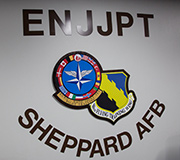












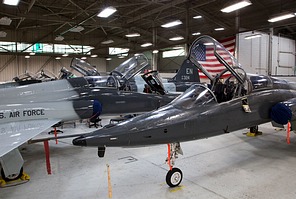












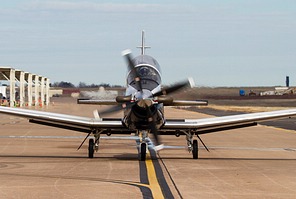





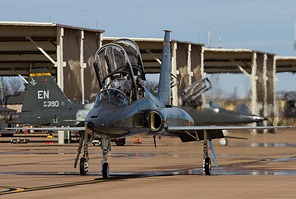

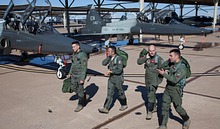
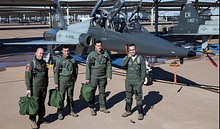



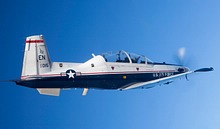
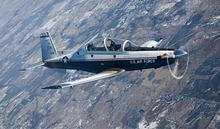



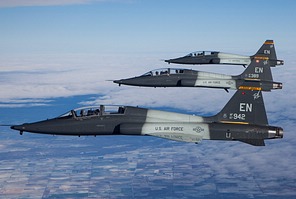





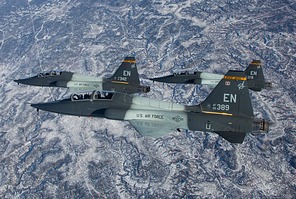




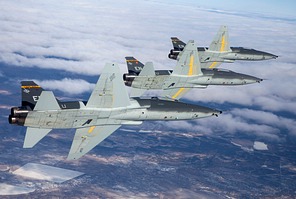


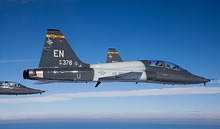
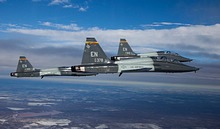








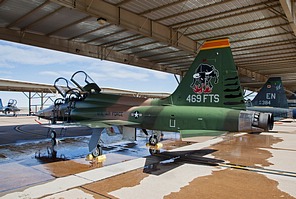


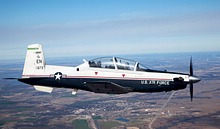
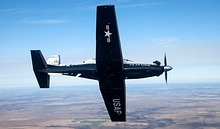
 Back to Index
Back to Index